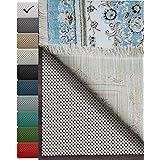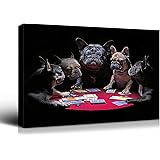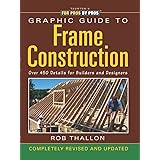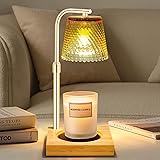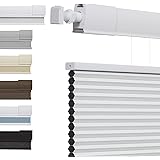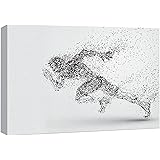A recent study highlights a growing trend: over 60% of consumers are embracing DIY projects for home maintenance and personal care. This surge reflects a desire for cost-effective, sustainable, and personalized solutions. The accompanying video, “20 Crazy DIY and Crafts You Need to Try,” perfectly showcases this movement. It offers quick visual guides to various clever DIY hacks. These range from common cleaning dilemmas to innovative craft projects. Many solutions utilize everyday household items. Such practical approaches redefine efficiency in daily tasks. Let’s delve deeper into these ingenious household DIY solutions. We can explore the science behind their effectiveness. Each tip helps simplify your routine.
Mastering Household DIY Solutions with Common Ingredients
Every home holds a treasure trove of potential DIY ingredients. Many items in your pantry or bathroom cabinet are surprisingly versatile. They offer powerful cleaning and crafting capabilities. Understanding their properties unlocks new possibilities. These simple compounds can replace numerous specialized products. This saves money and reduces chemical exposure. Embracing these household DIY solutions is a smart choice. It aligns with a more mindful consumption pattern. Consider the basic chemistry at play.
Unlocking the Power of Toothpaste and Baking Soda
Toothpaste, a daily essential, serves many purposes beyond oral hygiene. Its mild abrasive qualities make it ideal for gentle scrubbing. It can remove scuff marks from shoes. Furthermore, toothpaste effectively polishes tarnished silver. The finely ground calcium carbonate acts as a polishing agent. It lifts away surface grime with ease. Its fresh scent also helps neutralize odors. This makes it a fantastic multi-tasker. Consider its use for minor wall blemishes. It truly shines as a versatile cleaner.
Baking soda, or sodium bicarbonate, is another powerhouse. This ingredient boasts amphoteric properties. It can neutralize both acids and bases. This makes it an excellent odor absorber. Place an open box in your refrigerator to eliminate smells. Moreover, its mild abrasive texture aids in cleaning surfaces. Mix it with water to create a gentle scrubbing paste. This paste can tackle stubborn kitchen and bathroom grime. Baking soda is also safe for many delicate materials. It is a fundamental component for household DIY solutions.
Vinegar and Salt: Essential Laundry and Cleaning Allies
White vinegar, an acetic acid solution, acts as a natural disinfectant. It also breaks down mineral deposits effectively. This makes it perfect for descaling appliances. Use it to clean showerheads and coffee makers. The video highlights its role in preventing color bleeding in laundry. Adding a cup of vinegar to the wash cycle helps set fabric dyes. This minimizes unwanted color transfer. It leaves clothes fresh and soft. Vinegar offers a powerful, non-toxic cleaning alternative. It excels at tackling “yellow bath” stains too.
Salt, simple sodium chloride, plays a crucial role in laundry care. When added to the wash, especially for new fabrics, it helps prevent dye bleeding. This principle is rooted in osmosis. Salt can help ‘fix’ the dyes to the fabric fibers. It reduces the amount of dye that leeches out. This ensures your colored garments maintain their vibrancy longer. For spills, salt can also absorb fresh stains. It acts as a temporary blotter before a full wash. These methods prolong garment life.
Crafting and Personal Care Enhancements
DIY creativity extends beyond cleaning, encompassing personal care and artistic expression. Simple ingredients allow for personalized creations. These projects often yield more natural results. They avoid many harsh chemicals found in commercial products. Understanding basic material science empowers these endeavors. Such projects provide a rewarding sense of accomplishment. They are perfect for individual enjoyment or unique gifts. Unleash your inner artisan with these craft concepts.
Creating Luxurious DIY Bath Bombs
The secret to “Easy Bath Bombs” lies in a simple acid-base reaction. Citric acid and baking soda are the primary components. When mixed dry, they remain inert. However, upon contact with water, they react. This reaction produces carbon dioxide gas. The gas creates the signature fizzing action. Coconut oil acts as an emulsifier and moisturizer. Essential oils infuse the bath bombs with soothing aromas. Food coloring provides visual appeal. This combination creates a delightful, spa-like experience. These homemade versions allow for custom scents and colors.
Reviving Markers and Candle Crafting
Dried-up markers are a common frustration. Often, the ink isn’t truly gone. The solvent, usually alcohol-based, simply evaporates. A quick fix involves adding a few drops of rubbing alcohol to the marker’s reservoir. The alcohol re-dissolves the pigments. This restores the marker’s functionality. This simple trick saves money. It also reduces waste from discarded supplies. It exemplifies practical resourcefulness. This extends the life of craft tools.
Candle making becomes an accessible craft using common items. Crayons provide vibrant coloring for wax. Simply melt down old candle wax or paraffin. Add grated crayon pieces for desired hues. A simple cotton string or a pre-made wick is then centered. Pour the colored wax into suitable molds. This process allows for customized candles. These personalized candles make thoughtful gifts. They also enhance home ambiance. This transforms household waste into art.
Innovative Cleaning and Repair Hacks
Beyond standard cleaning, various unconventional materials offer surprising solutions. These methods often target specific problems. They demonstrate resourcefulness in everyday situations. Understanding the physical properties of these items is key. These hacks address everything from shoe care to persistent odors. They offer clever alternatives to specialized tools. Experimentation often reveals new effective approaches. Consider these ingenious solutions.
Unconventional Solutions for Shoes and Surfaces
Dirty shoes can often be revived with surprising tools. A piece of stale bread, specifically the crust, can effectively clean dirt from suede. The bread’s porous texture lifts away grime without harsh chemicals. This provides a gentle yet effective cleaning method. For tougher stains on sneakers, toothpaste again proves its worth. Its mild abrasives work wonders on rubber soles. This restores their original white appearance. These methods offer simple, practical shoe care.
Cleaning windows to a streak-free shine often proves challenging. Newspaper, however, is an excellent tool for this task. Unlike paper towels, newspaper fibers are lint-free. They leave glass surfaces sparkling clean. Pair it with a vinegar solution for optimal results. Wax, often used for candles, has applications in cleaning and protection. A thin layer of wax can polish surfaces. It also prevents limescale buildup in certain areas. This forms a protective, water-repellent barrier. It keeps surfaces cleaner for longer periods.
Addressing Odors and Small Repairs
Persistent odors are a common household challenge. Tea, coffee grounds, or cocoa powder are effective natural deodorizers. Their absorbent properties trap unpleasant smells. Place small bowls in areas prone to dampness or stale air. They also help deter mold growth. This offers a natural alternative to chemical air fresheners. Regularly replacing these natural absorbents ensures continued effectiveness. These ingredients transform stale spaces. They bring fresh scents naturally.
For minor metal item retrieval, a simple magnet can be invaluable. Dropped screws or pins are easily recovered from tight spaces. This saves time and prevents potential injuries. The video’s brief mention of “Iron. Magnet.” implies this practical application. Hair balm, typically used for styling, can also smooth minor scuffs on leather. Its conditioning agents help buff away imperfections. This restores a polished look to worn items. These diverse household DIY solutions enhance daily living.


